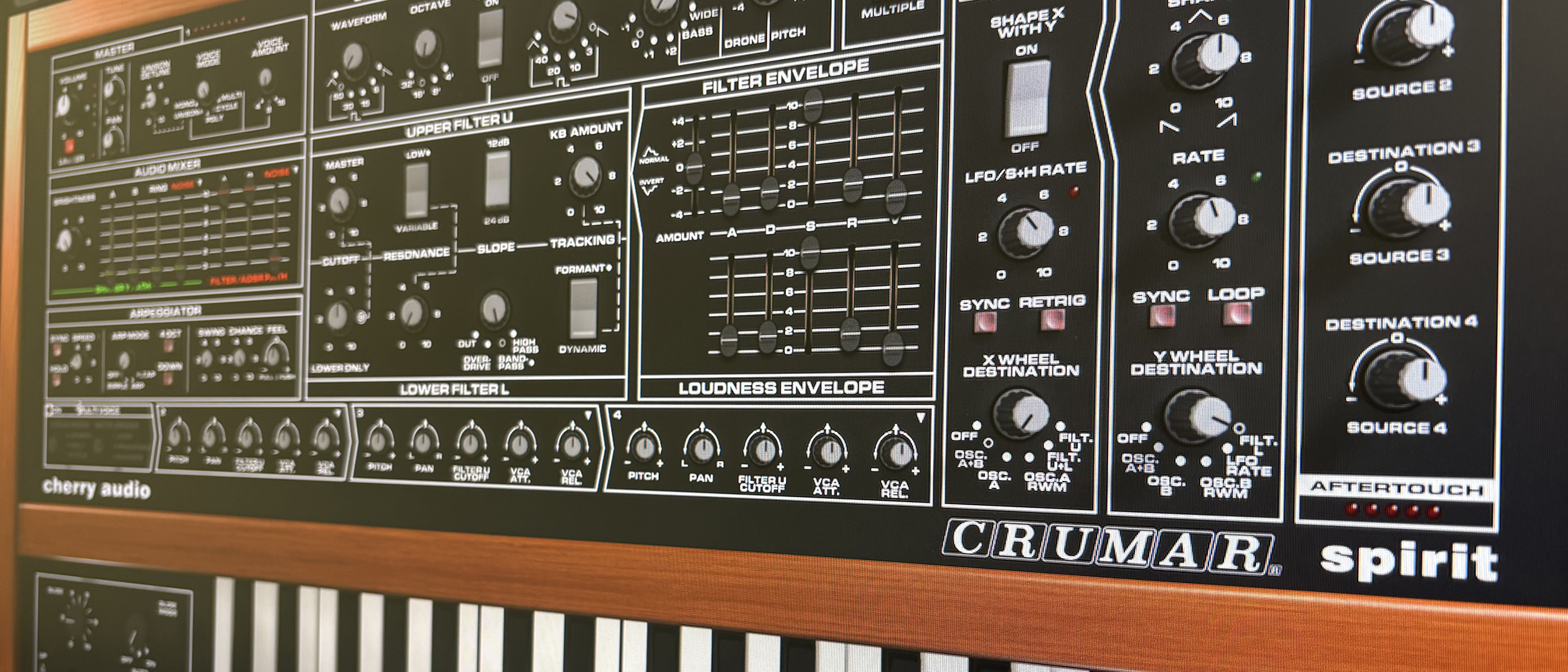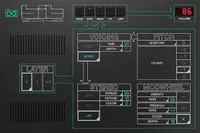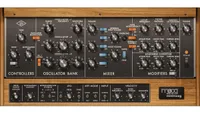MusicRadar Verdict
Crumar Spirit is yet another impressive revival from Cherry Audio, who continues to present unique classics with a spin on the contemporary. The stunningly impressive sonic and visual attributes immediately inspire, at a price which is affordable to all.
Pros
- +
Meticulously crafted software version of a sought-after classic.
- +
Significantly enhanced by superior modulation options, polyphony and effects.
- +
Packed with inspiring, instrument-style-curated presets.
- +
Delivers a bold, rip-roaring sound that works across a wide sonic spectrum.
Cons
- -
The layout takes some getting used to, much like the original.
- -
Parameter selection via some of the pots takes some getting used to, being indicated by reversed graphics.
MusicRadar's got your back
What is it?
When it comes to vintage analogue synthesizers, we’re all familiar with the classics manufactured in America and Japan, but there are plenty of untapped synths emerging from other parts of the world, many of which are classics in their own right.
Perhaps surprisingly, Italy developed a strong reputation for desirable instruments. Crumar (founded by Mario Crucianelli, hence Cru-Mar) was a highly prolific Italian company, particularly between the mid-'70s and '80s. It acquired a reputation for churning out a large number of models; a mixture of interesting new designs and revamped old ones, often with an eye on the market for touring musicians. Its designs tended to be quite rugged, with an eye for replicating the sound of acoustic instruments.
In 1983, as analogue was beginning to go through a bit of a rough patch, Crumar bravely decided to produce one of the last analogue monosynths of the era, with help from Moog engineers Jim Scott and Tom Rhea, and a certain Bob Moog, acting in a consultancy role. The result was the Crumar Spirit – an extensive analogue beast which boasted one of the biggest sounds of the era, with a host of other surprises too.
Finding an original Spirit in good condition and at a sensible price is a pipe dream for most of us, but through a collaboration between Cherry Audio and Crumar, the Spirit gets a new lease of life, in software form.
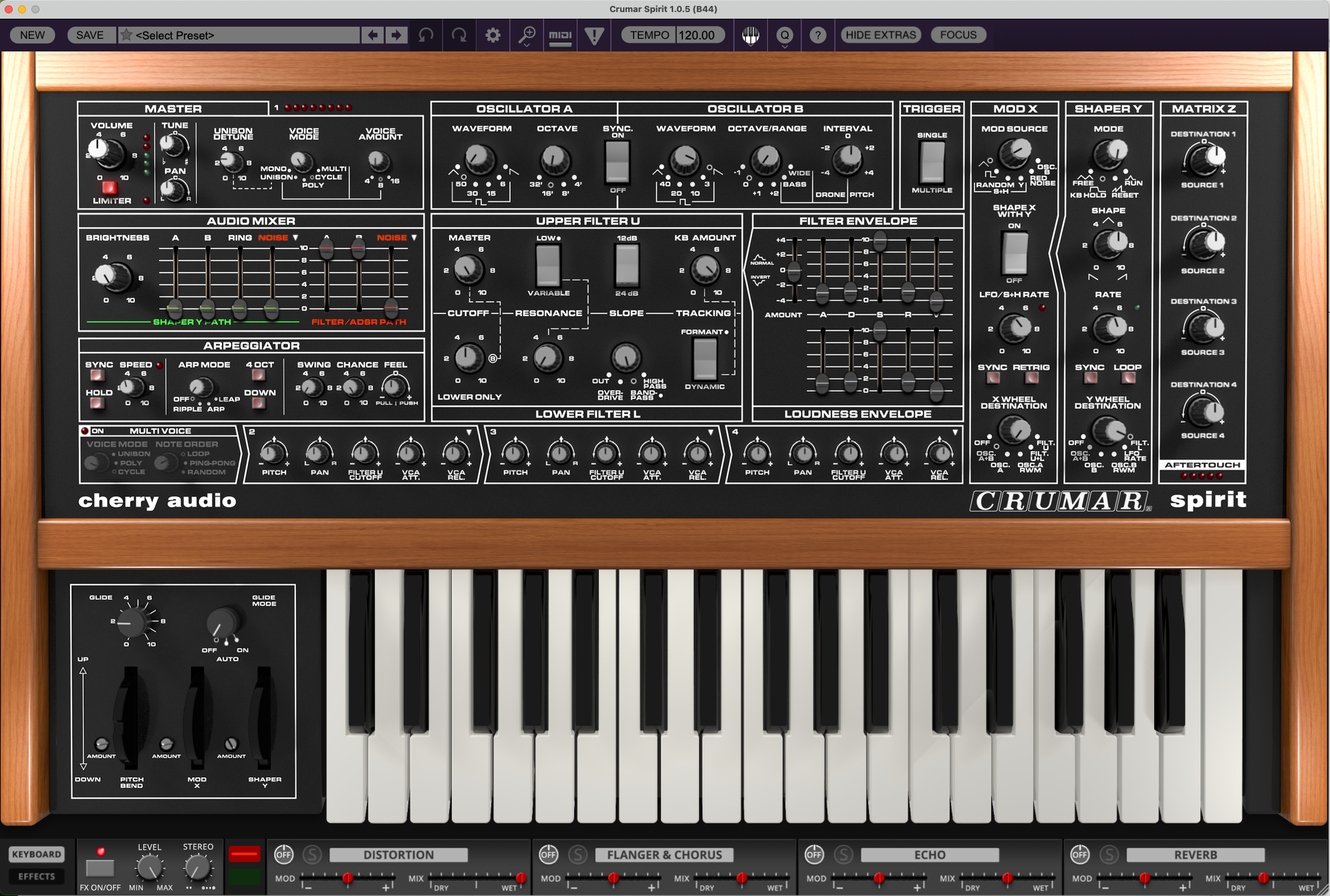
Performance
The Spirit was always deemed to be more complicated than its predecessors. Several new layers of complexity did however provide new and extensive sonic opportunities, particularly in the realm of modulation, and Cherry has not only picked up the baton in this arena, but run with it to add a degree of simplicity to proceedings, alongside other new features.
At the heart of the sonic pathway are two oscillators: A and B. Both are equipped with waveform selection, which sweeps from triangle to sawtooth, through varying pulse widths, offering the full gamut of broad or reedy sounds. There is octave control for each, along with fine tune of Oscillator B, and a sync button located between the two oscillators, which immediately boasts one of the finest sounding sync sounds around.
The oscillators feed the filter section, which was always deemed to be one of the instrument’s immense strengths. Switchable between 12/24dB, the filter is organised with upper and lower control, meaning that there is total flexibility for using in the more traditional low-pass mode, or adopting high or band-pass modes. Not only is it flexible, but it sounds utterly stunning, particularly when used alongside the onboard overdrive, which will help maintain grunt if using excessive amounts of resonance. Beyond the more usual, the combination of controls really allows the user to get creative with some interesting timbres. The cutoff point exhibits a beautiful wispiness, which is undeniably beautiful to work with, but can quickly be extended to more violent textures. One treat that we really enjoyed is that resonance whistling doesn’t tend to be as immediate as it is with some other devices, giving greater headroom for true filter colour, which won’t overwhelm your sound. It’s a really musical filter and perfect for numerous deployments.
Want all the hottest music and gear news, reviews, deals, features and more, direct to your inbox? Sign up here.
A pair of ADSR envelopes allows basic modulation of filter and amplitude, with an additional fader to indicate the amount of modulation to the filter, for both normal and inverted use.
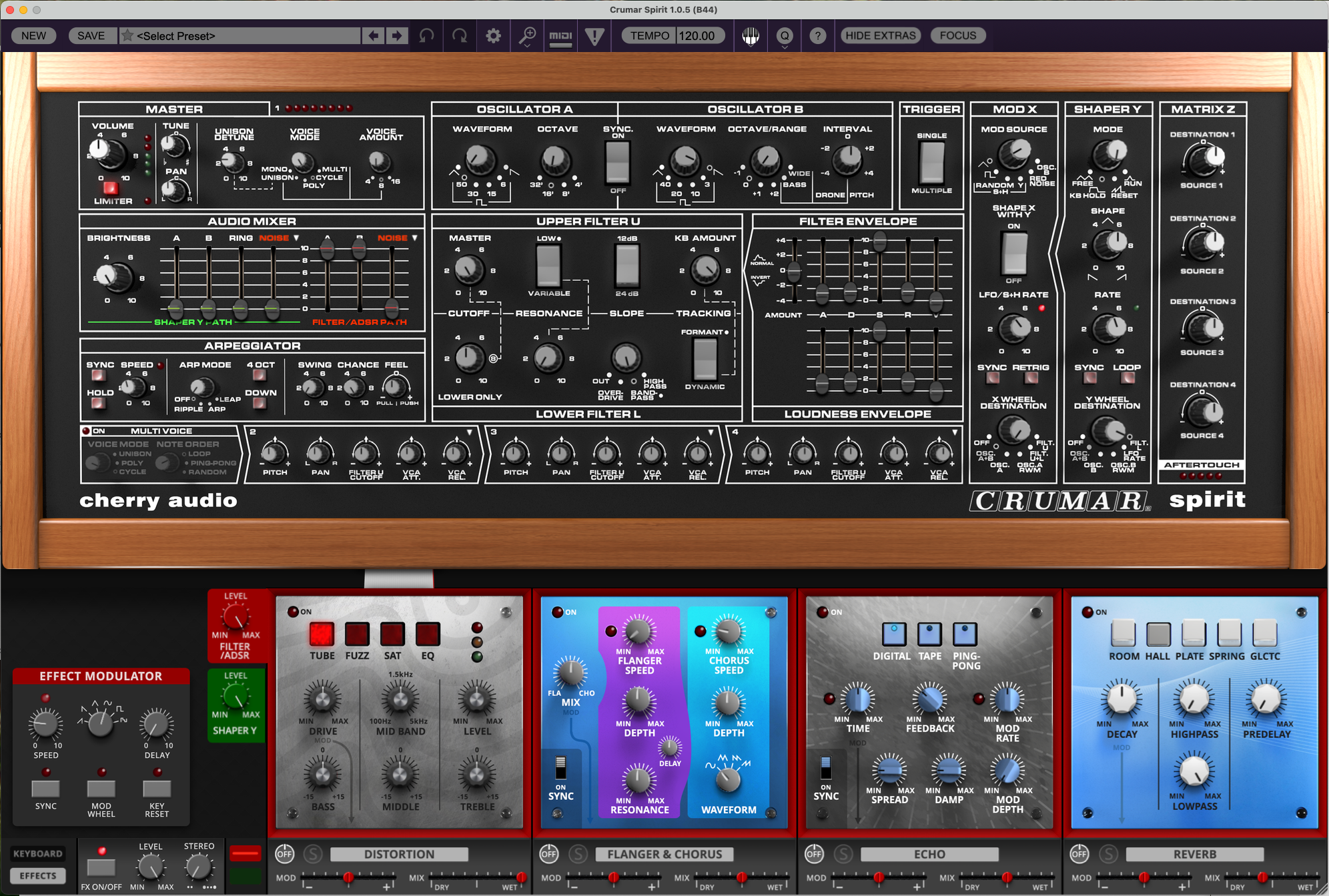
Ringing the mix
To the right of the plugin window, the audio mixer section allows the blending of oscillators and noise, but with additional capacity for ring modulation. One area where Cherry has extended usage over the original is with extensive use of modulation. By using the Shaper Y section, sublimely interesting pulsing patches are exceptionally easy to create, but more importantly, incredibly interesting to listen to.
The extensive modulation elements are impressive, with a further Mod X section providing everything from random sample and hold to red noise, open to application via modulation wheels. The Matrix Z section takes advantage of the software domain by providing access to all forms of destination and source for the purposes of modulation. At first, the pots and legends aren’t overly intuitive, but clicking a legend opens a menu of destinations and sources.
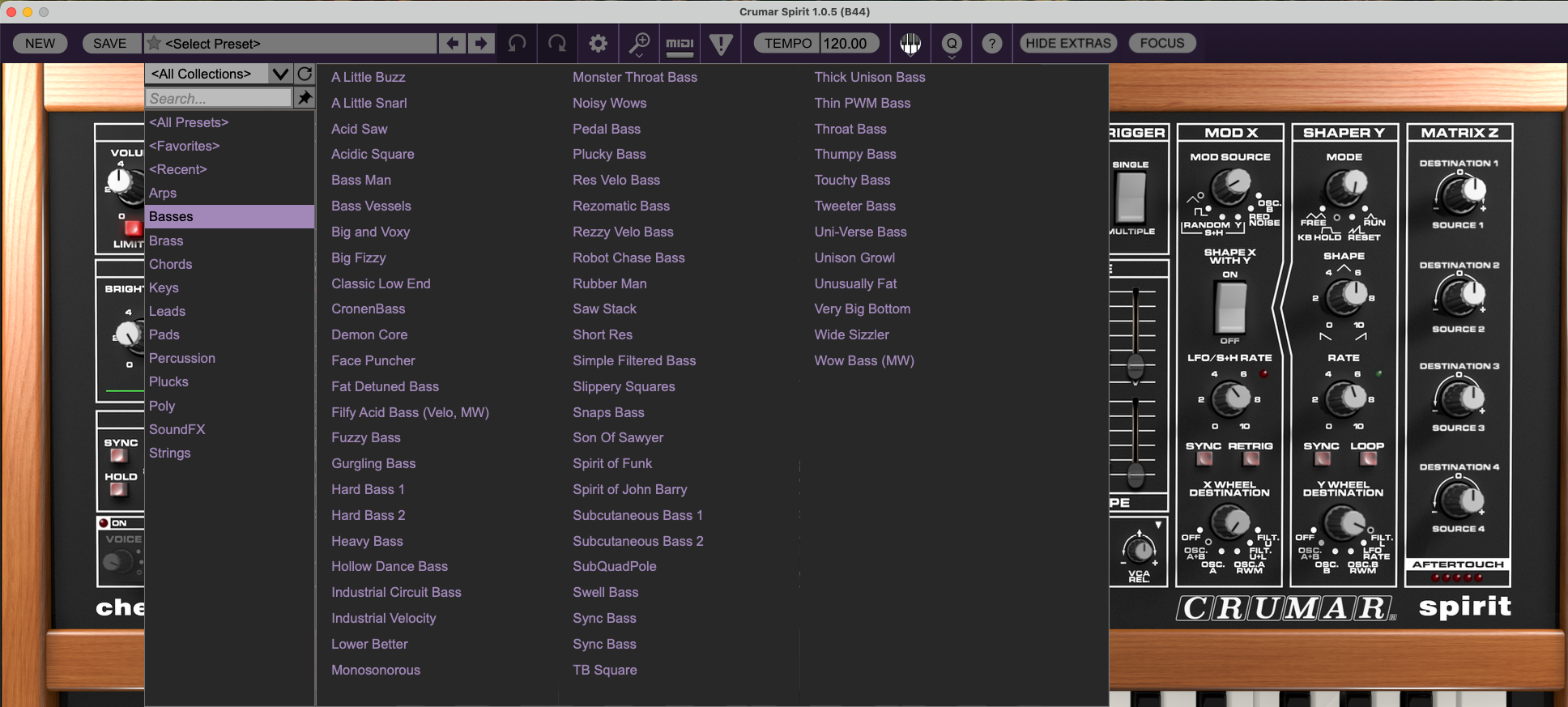
Verdict
We can’t overstate how impressive this new interpretation of the Crumar Spirit really is. Like all Cherry Audio products, there is an extraordinary attention to detail, which always looks after the basics first, but then extends to include really useful, additional functionality.
In case the basic sound is just not big enough for you (and it really does sound huge already) you can increase the voice count up to a full 16 notes, before deciding whether to use in polyphonic or unison mode. With an accompanying detune pot, the sound of 32 oscillators creating merry mayhem had the floorboards rattling in no time, but it is important to stress that the Spirit is equally at home providing more sympathetic and pad-like tones. Its flexibility makes it brilliant for staple sounds, but also a playground for analogue-inspired sound design, which can go way beyond the basics.
Should you need any more convincing, the considerable number of curated patches can steer you in the right direction, with the arpeggiator and effects sections adding further to the tempo-synced fun.
Hands-on demos
Cherry Audio
Alternatives
Based on the Bit 99 (the company that Crumar morphed into), UVI has created a unique sounding poly, albeit in sample form. Full of analogue warmth and colour, but less gnarly than the Spirit.
Read more about UVI Bit Zone
Presented by Crumar itself, the Performer (in software) simulates its legendary string/brass synth. Less versatile, but still very worthy of addition.
Read more about Crumar Performer
The Crumar Spirit is often described as the Italian Minimoog, so any number of the currently available Minimoog plugins could offer an alternative solution. Alongside Cherry Audio’s Miniverse (at just $49), the UA Minimoog is one of the finest examples currently available.
Read more about Universal Audio Moog Minimoog
Specifications
Price | $59 |
Key features | 2 x Oscillators per voice Ring Modulation Flexible filter section 2 x ADSR envelopes Incredibly extensive modulation section Arpeggiator and effects inbuilt Scalable interface |
Contact |
Roland Schmidt is a professional programmer, sound designer and producer, who has worked in collaboration with a number of successful production teams over the last 25 years. He can also be found delivering regular and key-note lectures on the use of hardware/software synthesisers and production, at various higher educational institutions throughout the UK
You must confirm your public display name before commenting
Please logout and then login again, you will then be prompted to enter your display name.
